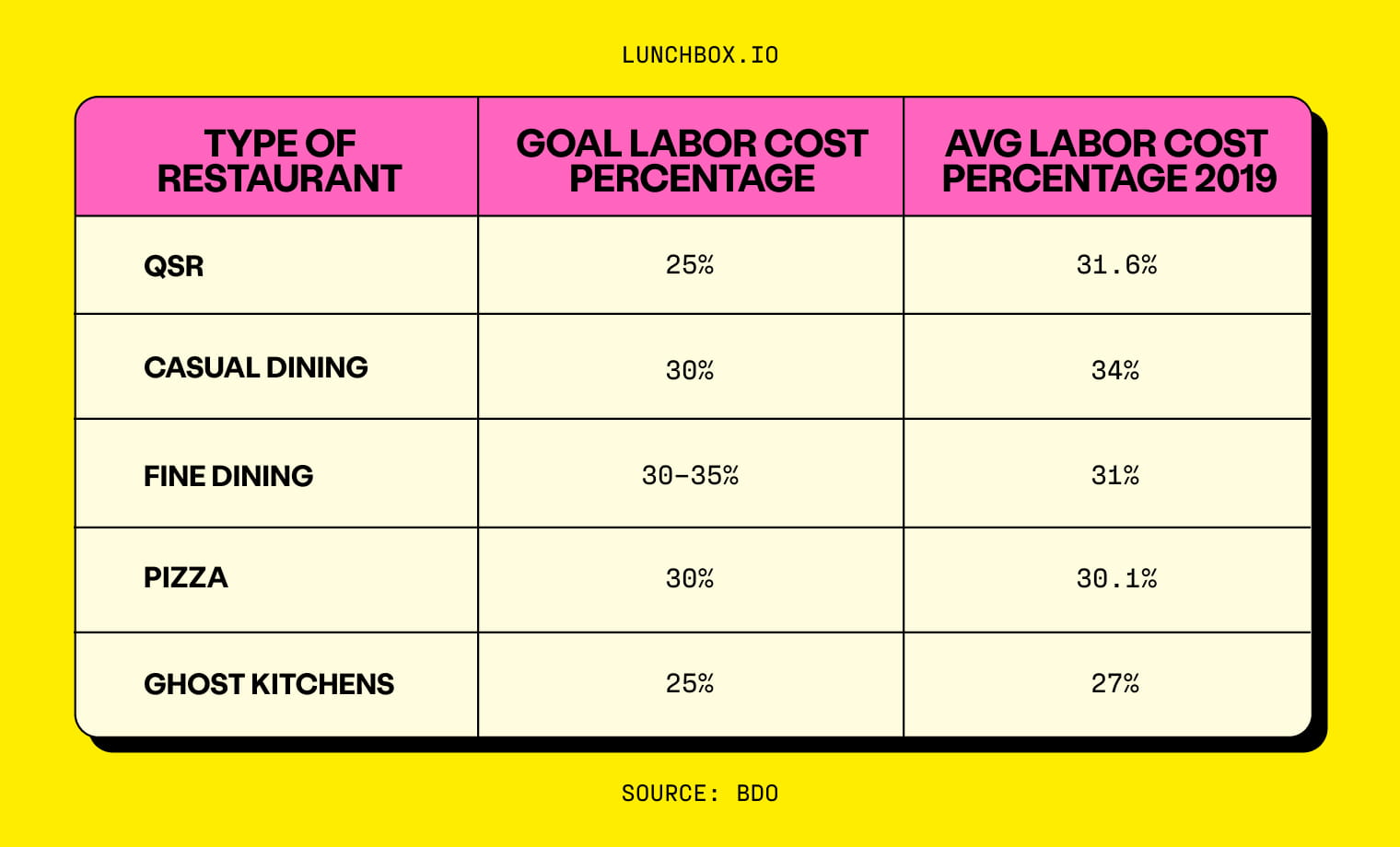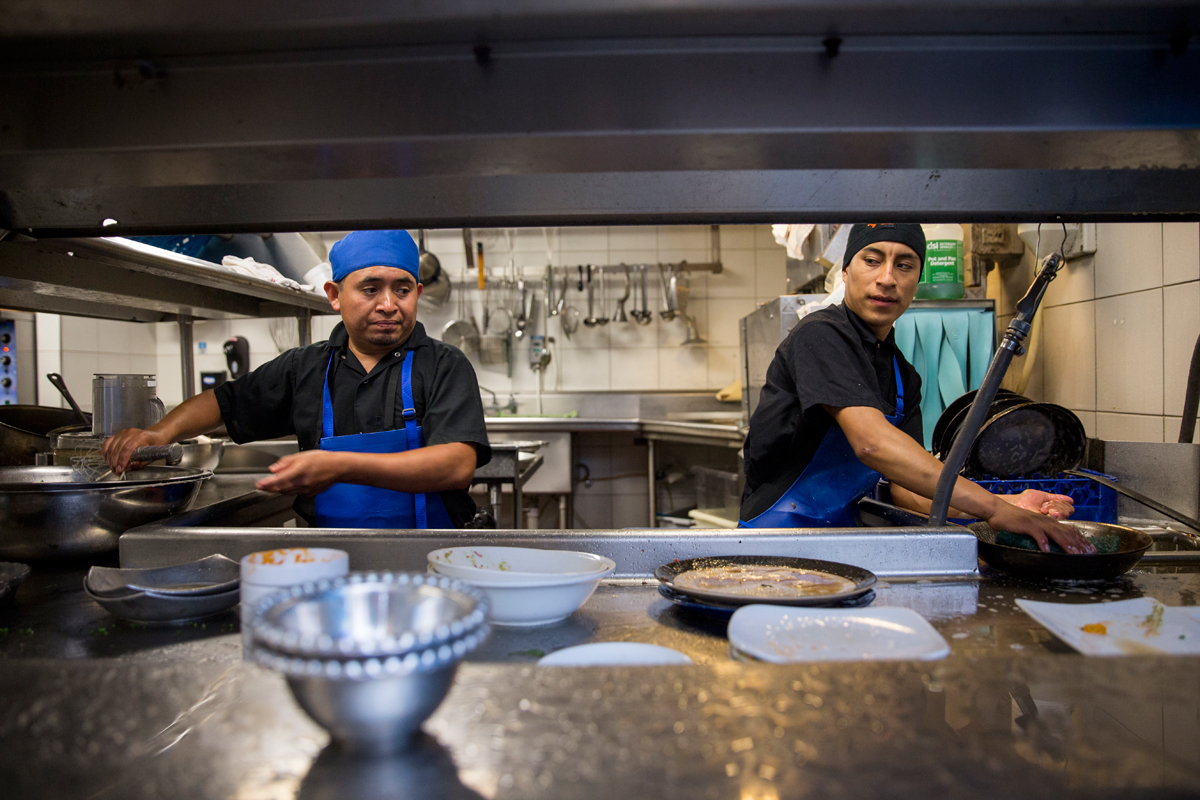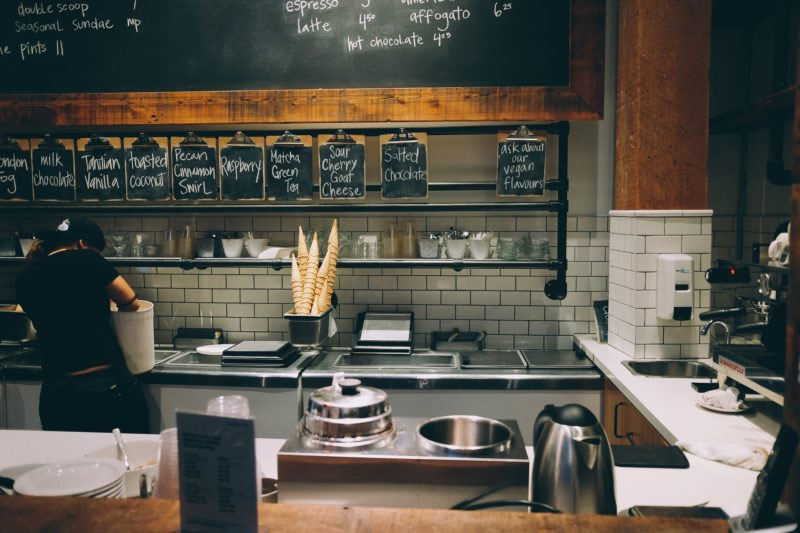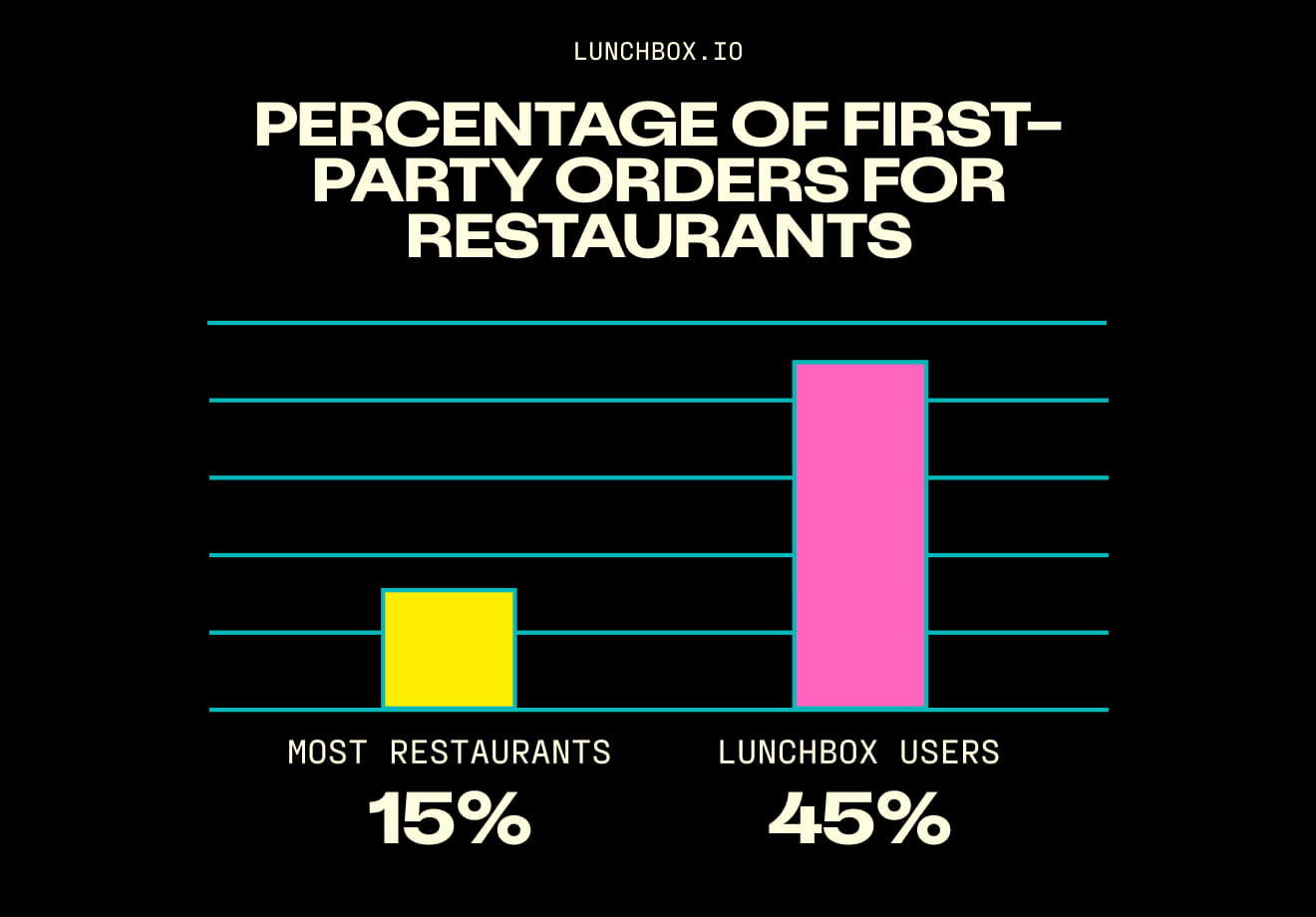CHECK OUT THIS ARTICLE:
Share
- Jump to:
With minimum wages rising across the country, restaurant owners might be tempted to cut back on staff to lower restaurant labor cost. But good employees are hard to find and restaurateurs have invested significant amounts of time (and money) into training them already.
Restaurants that don’t reduce their labor cost percentage will struggle to turn a healthy profit. So, what’s the solution?
Labor costs refer to the amount your restaurant spends on labor. This number includes total pay for full-time and part-time workers, including their taxes, pensions, and benefits.
When you calculate labor cost as a percentage of your sales, you get a number that can help you make big-picture business decisions—such as whether it’s time to cut down on part-timers or recruit more waiters to meet the rush.
This article is your personal guide to demystifying labor costs, figuring out if you’re on the right track, and what to do if you aren’t. We unpack:
The best formula for calculating your labor cost percentages.
What you should be spending on labor, regardless of what type of restaurant you’re running.
7 strategies for cutting soaring labor costs.
So grab your business spreadsheets and a calculator. We’re about to dive deep.
How to Calculate Labor Costs For Restaurants
Labor costs are one of the most important metrics for any restaurant to track.
The first concept you need to understand is prime cost. Prime cost includes labor cost, as well as the total cost of goods sold (COGS). By controlling your prime cost, you control how much you’re spending—which helps optimize the bottom line.
Your labor percentage is determined by what percentage of prime cost goes into labor. So scroll through your payroll records and crunch the numbers. You’ll want to tally up:
Hourly wages.
Payroll taxes.
Benefits.
Pensions.
Other state-specific labor costs.
Let’s assume you spent $4,000 on labor per quarter. The next step is calculating your total or gross sales before tax. Say that’s $12,000. You then apply the following formula to those numbers.

(Total Labor Cost / Total Sales) X 100 = Labor cost as a percentage of total sales
(4,000 / 12,000 = 0.33) X 100 = 33%
Calculating your restaurant labor costs over a particular month or quarter can be very useful—for example, an ice cream restaurant will have very different percentages in summer versus winter.
Keep an eye on this number to make sure you have enough staff to handle the demands of each quarter. If it’s higher than 30%, then you’re probably spending too much on labor.
On the other hand, if things get busy and that number drops below 25-20%, you might need to hire extra hourly employees to cope with the rush. To continue our example, an ice cream place might need to hire extra staffing in summer, which would actually reduce their labor cost percentages as their COGS number rises.
What Is a Good Restaurant Labor Cost Percentage?
Many restaurant industry experts say that your labor cost percentage should be about 30% of your sales. But there’s no true one-size-fits-all figure. Different types of restaurants have different labor needs, price points, and various other factors. This table highlights some of these differences:

Source: BDO
As you can see, different restaurants have different costs. Ghost kitchens and QSR have the lowest labor cost percentages, while fine dining restaurants have some of the highest—which is understandable when you think about the service costs involved.
If your labor cost percentage is high, first of all—don’t panic and make rash decisions. Firing or hiring extra workers might not be the best course of action. Trying to consolidate kitchen staff and shifts will overload your team. A measured approach can work wonders.
Next up: Practical steps any restaurant business can take to lower labor costs.
7 Ways to Lower Restaurant Labor Costs Without Firing Anyone
The rise in minimum wage has forced many restaurants to analyze their operating costs and make hard decisions. If your labor costs are above 30%, you might be tempted to fire employees—but that’s not always the best thing to do.
Here are 7 ways to combat the rise in labor costs without having to lay off your staff.
1. Keep your staff smiling to increase employee retention.
Employee turnover in the restaurant industry might feel like an ever-repeating cycle of hiring and training. Some fast-food giants have turnovers of 130-150% per year.
But training new employees isn’t cheap. The average restaurant spends $2,000 a year on employee POS training alone. A lot of companies might fare better by holding onto staff and nurturing them to lower labor costs.
There are a number of ways you can do this:
Give staff opportunities for personal and professional growth.
Offer perks for good performance; think coupons and better parking spots.
Check in with staff via daily or weekly surveys sent to their phones. If something is wrong in-store, you can deal with it before discontentment spreads.
Keeping your employees around for longer means you won’t have to waste time on the interviewing, hiring, and retraining hamster wheel, which whenever it’s running drives up your labor cost percentages.
2. Set up reliable equipment that reaps returns.
Reliable equipment allows you to process orders faster and more efficiently. Your employees will spend less time trying to get something to work and more time actually serving diners. All this equals more orders processed, a higher COGS score, and a lower labor cost percentage.

Source: Civil Eats
3. Streamline restaurant operations across the board.
Invest in your restaurant’s efficiency. Take the time to establish clear and precise procedures for everything that needs to be done and you’ll make each employee that much more efficient. Here is how to do this:
Improve front-of-house efficiency.
Hold pre-shift meetings with your staff. You can go over any menu changes, important news, and ensure that everyone is on the same page.
Add mobile tablets to your restaurant. This will let you process orders directly at the table and send order information directly to the kitchen without creating a queue of waiters at the POS terminal.
Educate your waiters on the allergen or nutritional details on your menu and have all of that information in one easy-to-access place so they can quickly and confidently answer customer queries.
Improve back-of-house efficiency.
Consider optimizing your kitchen’s layout. Is everything in the most efficient place possible to ensure fast service when orders are at a high volume?
Install a kitchen display screen (KDS) to get information to the kitchen accurately. Paper is slower and easier to drop on the floor. And have you seen some of your staff’s handwriting?
Have all your recipes on file in a single place so when anyone is unsure, they know exactly where to go. This cuts down on any questions about food prep new members of staff might have.
Design easy-to-execute systems for mundane tasks like inventory or cooler temperature logging. When there’s a simple and logical system in place for these kinds of tasks, everything runs on autopilot and staff can work more efficiently.
Improving efficiency across the board means you can process more orders and drive more revenue. The higher your sales, the lower your labor cost percentage will be.
4. Make your employees jacks-of-all-trades.
When your bartender calls in sick, you don’t need to reach for the whiskey. Cross-train your staff instead. Giving employees a basic background in various other duties allows you to reshuffle them as needed when people call in sick or fail to show up for shifts.
This saves on labor costs because you won’t need to hire as many additional or specialized hourly staff. Plus, it ensures things run optimally even when everyone doesn’t turn up to work as expected.
5. Leverage the power of technology.
Restaurant technology has seen nothing less than a revolution in recent years. Modern restaurant tech helps you get the most from your staff and frees them up to focus on tasks that benefit from a human touch.
The list of technology you could adopt is vast—but here are a few you might want to consider:
Order and pay from your phone in-store. When customers can just sit down, scan a QR code to access the menu, and pay via their digital wallet, all your staff need to do is prep and deliver their meals.
First-party ordering platforms. Using a first-party ordering platform and app allows you to connect directly with your customers and save up to 30% in commissions. And all those delivery orders require less labor and less service.
Labor-saving order kiosks. McDonald’s and a lot of large QSRs are known for these. Implementing kiosks means staff can focus on providing an excellent dining experience, rather than taking down orders.
AI ordering. Recent advances in AI technology have led many restaurants to adopt AI. Natural language processing means AI tech can now process orders with a very low error rate, and they can even use customer data—everything from the weather to customers' food preferences—to suggest a custom upsell.
Restaurant technology is an investment. It’s not the cheapest option, but it’s one that’s sure to cut down labor costs and drive future profits.

Source: Posist.com
6. Monitor overtime hours for hourly staff.
Overtime hours add up fast, so make sure your managers and schedulers are clear on what counts as overtime—and how much it costs. Here’s how the Department of Labor summarizes overtime laws:
Overtime must be paid at a rate of at least one and one-half times the employee's regular rate of pay for each hour worked in excess of 40 hours per week. In determining the regular rate for a tipped employee, all components of the employee’s wages must be considered (i.e., cash, board, lodging, facilities, and tip credit).
Smart scheduling is a simple way to save on these costs and you don’t need to pore over timesheets for hours to do it.
Many restaurant management platforms can automatically notify you when someone is getting close to reaching their 40 hours. When the system flags this, adjust the schedule for the week and cut your labor costs without cutting your staff.
7. Hold managers accountable to higher labor costs.
Your managers are the decision makers in your restaurant. They decide who gets scheduled where and how staff are used on a day-to-day basis. They’re running the entire show for you.
If you want your employees to be used efficiently you need to get managers on your side. Explain how important it is for the restaurant that the labor cost percentage stays healthy. Consider incentivizing them with bonuses for keeping labor costs down.
The Price Of Not Calculating Labor Costs Is High
This might be the most difficult period in recent history to run a restaurant. Between the pandemic, the hiring crisis, and the rise in minimum wages, it seems like the odds really are stacked against restaurant owners.
But data is here to help. By calculating and understanding labor cost percentages, restaurant operators can keep their fingers on the pulse of their restaurant’s health. And if things aren’t looking rosy, the steps we outlined above can help you get things back under control.
Like we said, getting your restaurant labor cost percentage down isn’t about firing and hiring. It’s about increasing your profit margins.
Cutting the shackles of third-party apps with their 30% commissions is a great way to do this. When you save on fees, your COGS number rises—leading to healthier profits and a healthier labor cost percentage.

Most restaurants have an average of 15% first-party orders. Lunchbox users average 45%.
Curious about implementing a first-party order system, but not sure where to start? We’ll show you how it’s done. Fill out the form below.